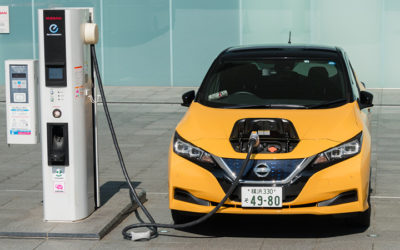

Building energy management systems
Direct and indirect CO2 emissions from buildings account for 28% of energy-related CO2 emissions, according to Towards a zero-emission, efficient, and resilient buildings and construction sector Global Status Report 2017 by UN Environment and the International Energy Agency (IEA). Under the IEA’s Reference Technology Scenario (a scenario that would result in a 2.7°C temperature increase by 2100), CO2 emissions from buildings would increase by 10% by 2050.
Building energy management systems (BEMS) are an information technology-based solution that uses sensing, control and automation hardware to deliver automated and manual improvements to system operations and energy efficiency in buildings. These improvements reduce energy consumption in buildings, which usually leads to a decrease in GHG emissions.
There are four types of BEMS functionalities: visualization and reporting, fault detection and diagnostics, predictive maintenance and continuous improvement, and optimization. The basic BEMS functionality (visualization and reporting) is very mature and the emergence of the Internet of Things (IoT) has made more BEMS functionalities available to a growing number of customers.
What are the benefits?
BEMS reduce energy consumption in buildings. According to the IEA’s Digitalisation and Energy report, the total energy savings from improved controls in residential and commercial buildings could be as much as 10% between 2017 and 2040 compared with a business-as-usual scenario.
As a result, BEMS help to avoid direct GHG emissions (such as from heating) and lower indirect emissions by reducing electricity consumption. The direct GHG emissions avoided depends on the fossil energy source substituted and the indirect emissions avoided depends on the country’s specific electricity grid emission factor. BEMS can bring additional benefits, such as better space use or increased employee productivity, engagement and satisfaction.
What are the barriers?
One of the biggest barriers to BEMS uptake is a potential landlord-tenant conflict where the landlord might need to make the investment, but the tenant realizes the BEMS cost savings. Additionally, there is lack of awareness of the potential energy savings from a BEMS.
What do we need to scale up?
- Policies that promote energy management and subsidize BEMS installations
- New business models (such as energy service companies, software as a service)
- Cost-effectiveness via a minimum building size or a combination of multiple smaller buildings
We thank Guidehouse for their contributions to the development of this business case.
More business cases
Battery electric vehicles
Light duty vehicles (LDVs) such as passenger cars and vans are responsible for 51% of CO2 emissions from the transport sector (4.8 GtCO2 on a well-to-wheel, or WTW, basis). WTW emissions include emissions in fuel production and transportation, as well as fuel...
Biofuels in shipping
According to the International Council on Clean Transportation, the shipping sector accounted for 3% (932 MtCO2) of emissions in 2015. The International Energy Agency’s Reference Technology Scenario (a scenario that would result in a 2.7°C temperature increase by...
Concentrated solar heat
CO2 emissions from industry account for 24% of global energy-related CO2 emissions (8.3 GtCO2), according to the International Energy Agency’s Energy Technology Perspectives 2017. Concentrated solar heat (CSH) technologies are a low-carbon solution to meeting medium...

Copyright © 2025
World Business Council for Sustainable Development
All rights reserved | Privacy Policy



